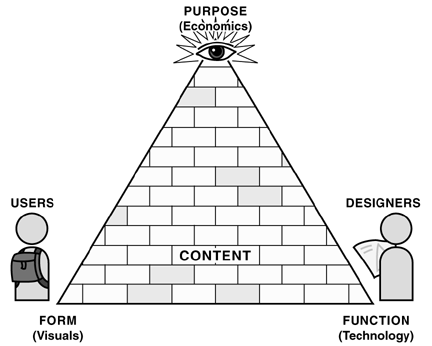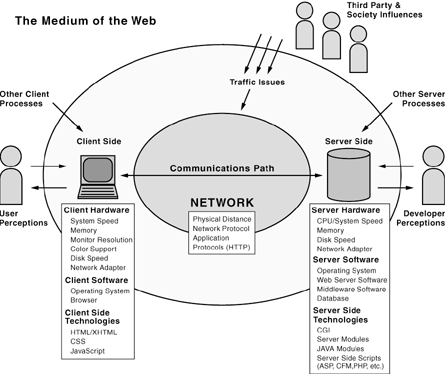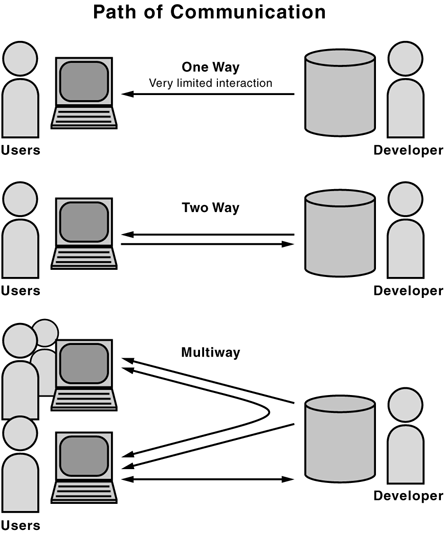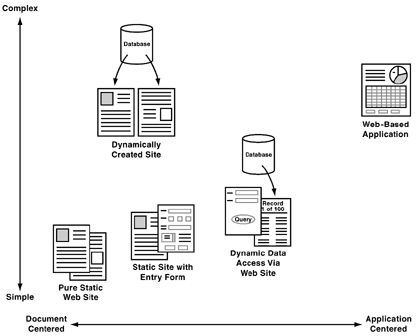Concepts of Web-Page Design
Facets of Web Site Design |
Traffic and Systems Issues

In simplest form can think of Web Site Services as Client- Server Oriented:
Server-side: includes the Web server hardware and software as well as programming elements and built in technologies. The technologies can range from simple CGI programs written in PERL to complex multi-tier Java based applications (and many other languages) and include backend technologies such as database servers that may support the Web site.
Client-side is concerned with the Web browser and its supported technologies, such as HTML, CSS, and JavaScript languages and ActiveX controls or Netscape plug-ins, which are utilized to create the presentation of a page or provide interactive features.
Network describes the various connectivity elements utilized to deliver the Web site to a user. Such elements may be the various networks on the public Internet or the private connections within a corporation—an intranet.
|
Communication Paradigms
Need to consider how you will communicate with users.

|
Web Site "Dynamics"
There is a growing trend to go from simple static web sites to more dynamically delivered ones.

|
Web Site Categories
There are many ways to "categorize" a website including by its purpose.
| Informational sites These sites provide information about a particular subject or organization (the "brochureware" sites). These are the most common Web sites on the Internet and often take on aspects of the other site categories over time. |
| Transactional sites This type of site can be used to conduct some transaction or task. E-commerce sites fall into this category. |
| Community sites These provide information or transaction-related facilities, but focus on the interaction between the visitors of the site. Community-based sites tend to focus on a particular topic or type of person and encourage interaction between likeminded individuals. |
| Entertainment sites These sites are for game playing or some form of amusing interaction, which may include transactional, community, and informational elements. |
| |
Also, within each category above you can further classify a website by its "ownership":
| Commercial These sites provide information about a particular subject or organization (the "brochureware" sites). These are the most common Web sites on the Internet and often take on aspects of the other site categories over time. |
| Government This type of site can be used to conduct some transaction or task. E-commerce sites fall into this category. |
| Educational These provide information or transaction-related facilities, but focus on the interaction between the visitors of the site. Community-based sites tend to focus on a particular topic or type of person and encourage interaction between likeminded individuals. |
| Charitable These sites are for game playing or some form of amusing interaction, which may include transactional, community, and informational elements. |
| Personal Included here are artistic or experimental sites, personal Web spaces such as Web logs (also called blogs), and sites that may not follow common Web conventions or have a well-defined economic purpose. |
|
|



